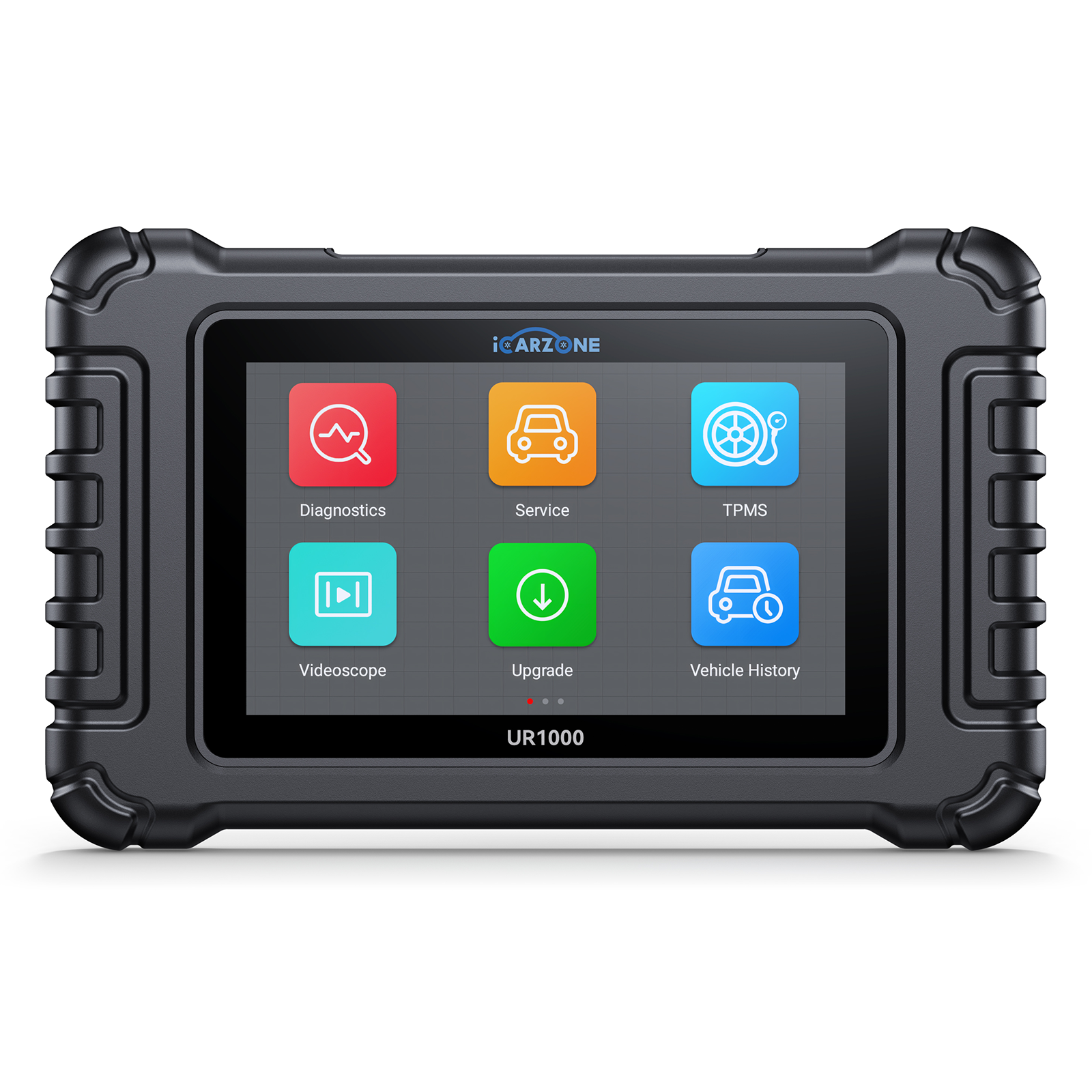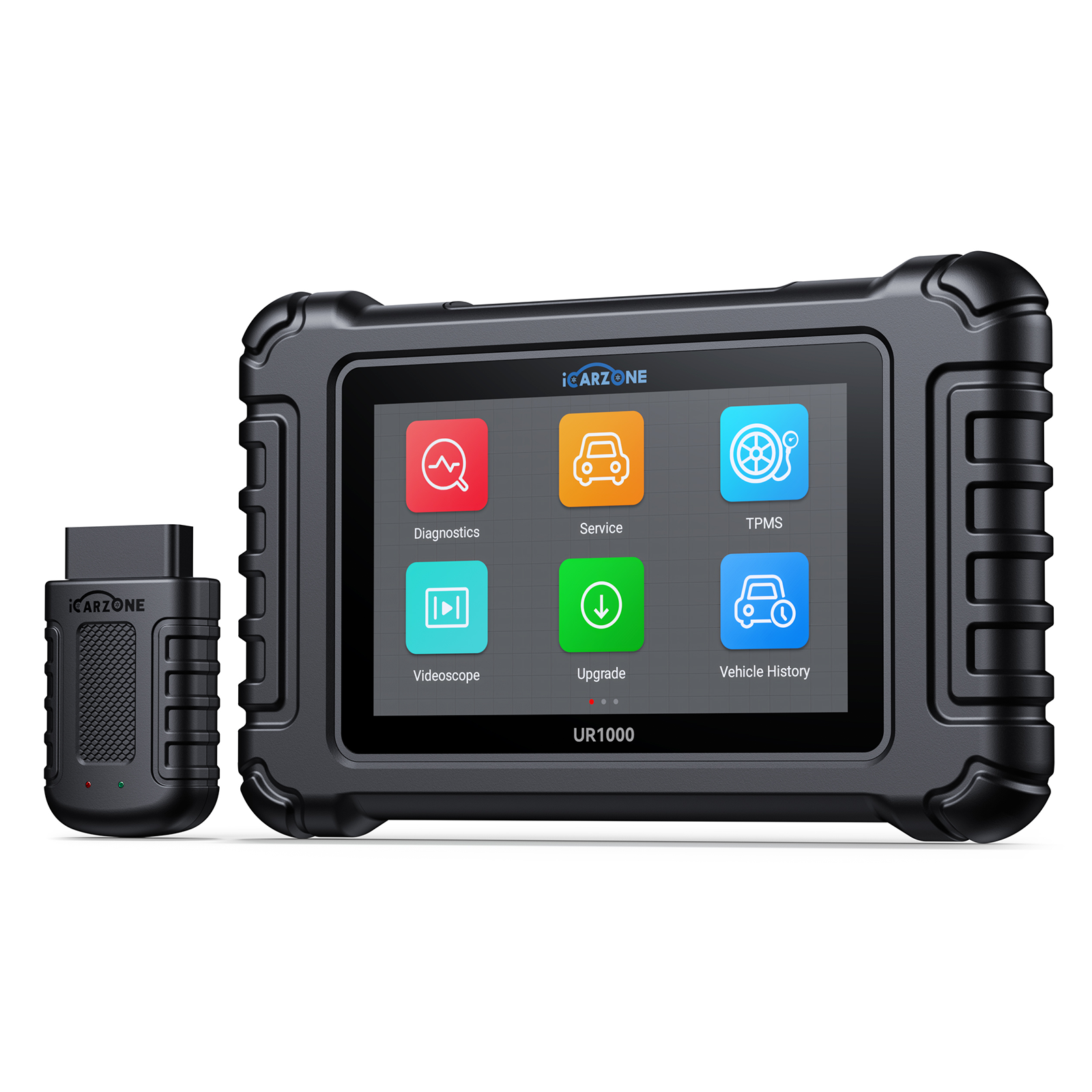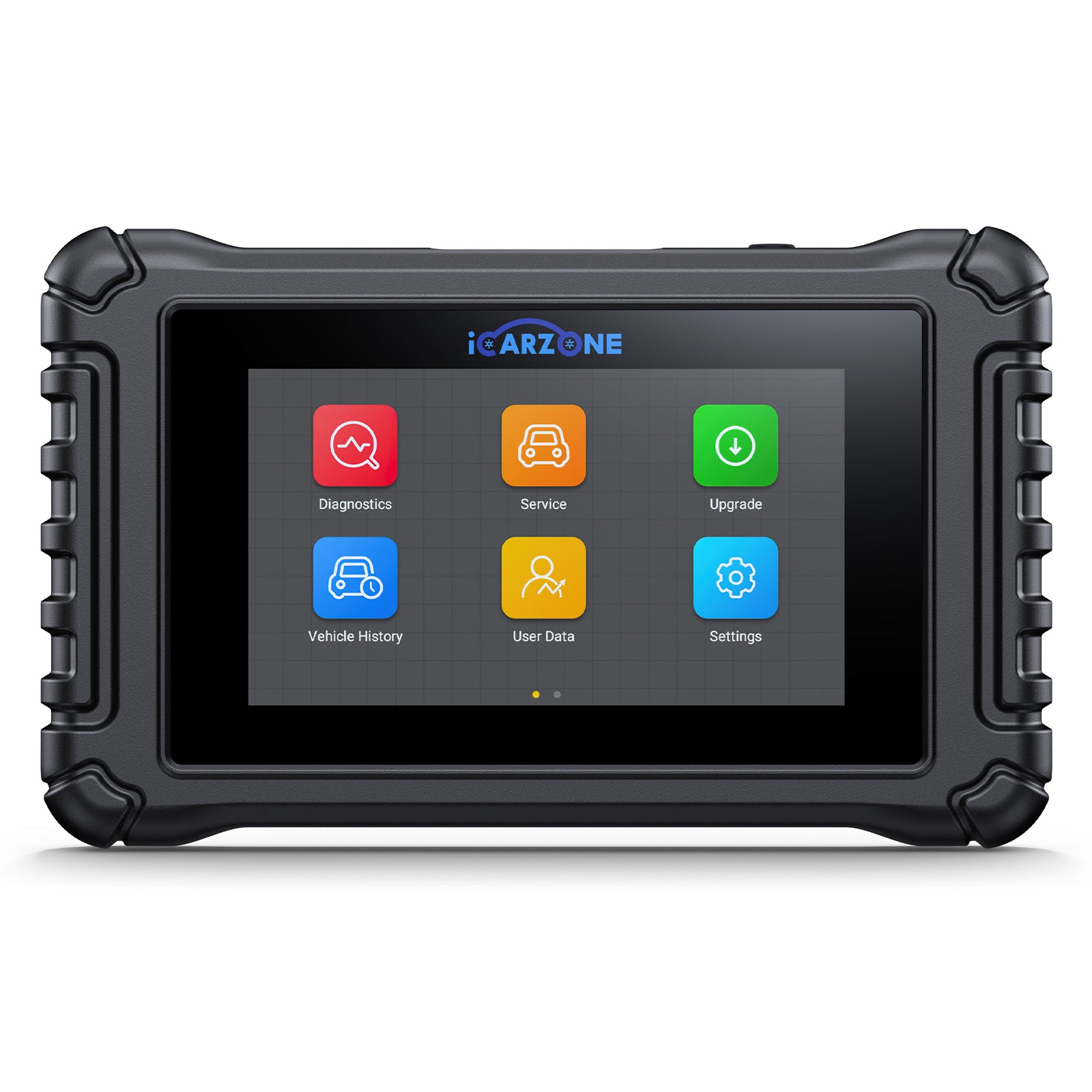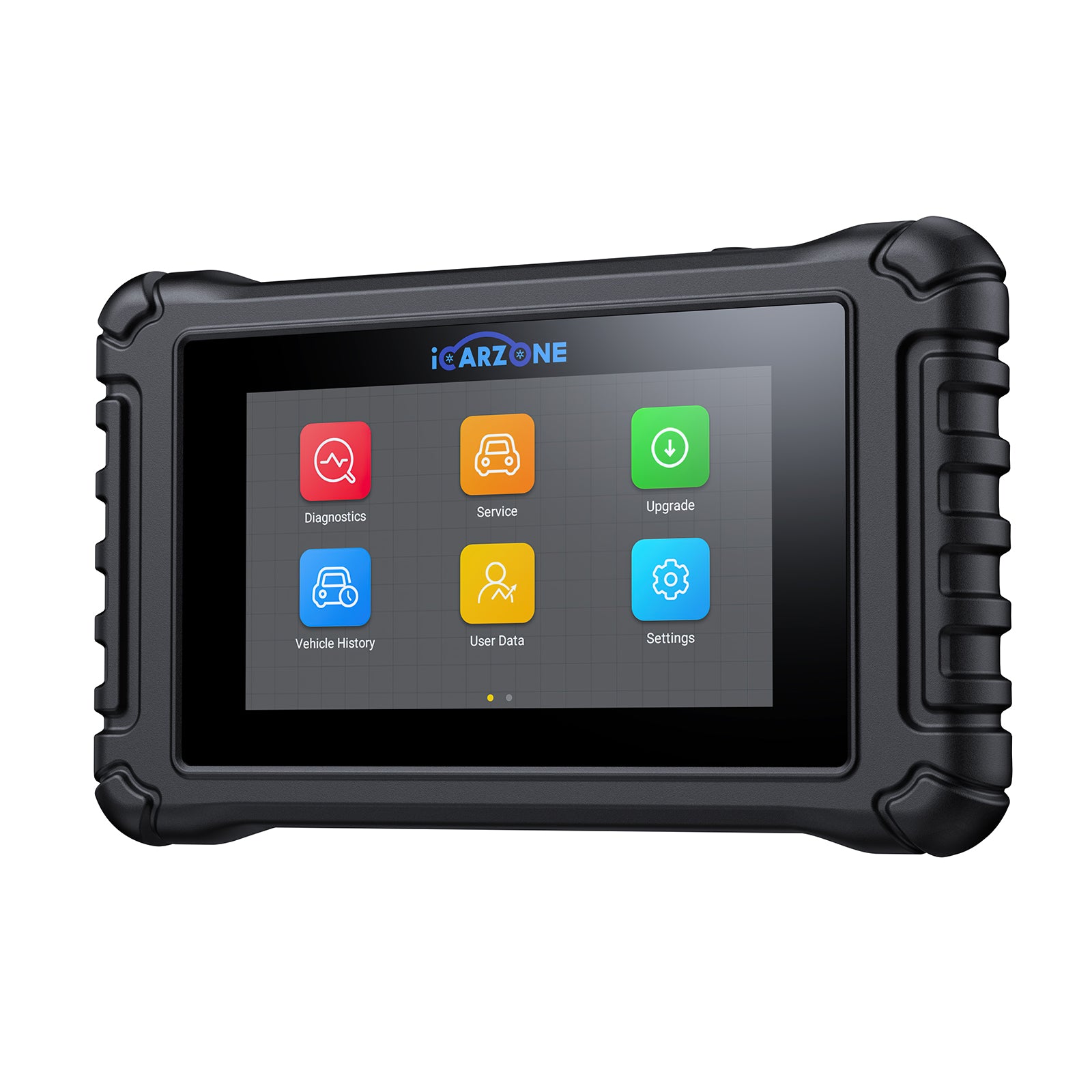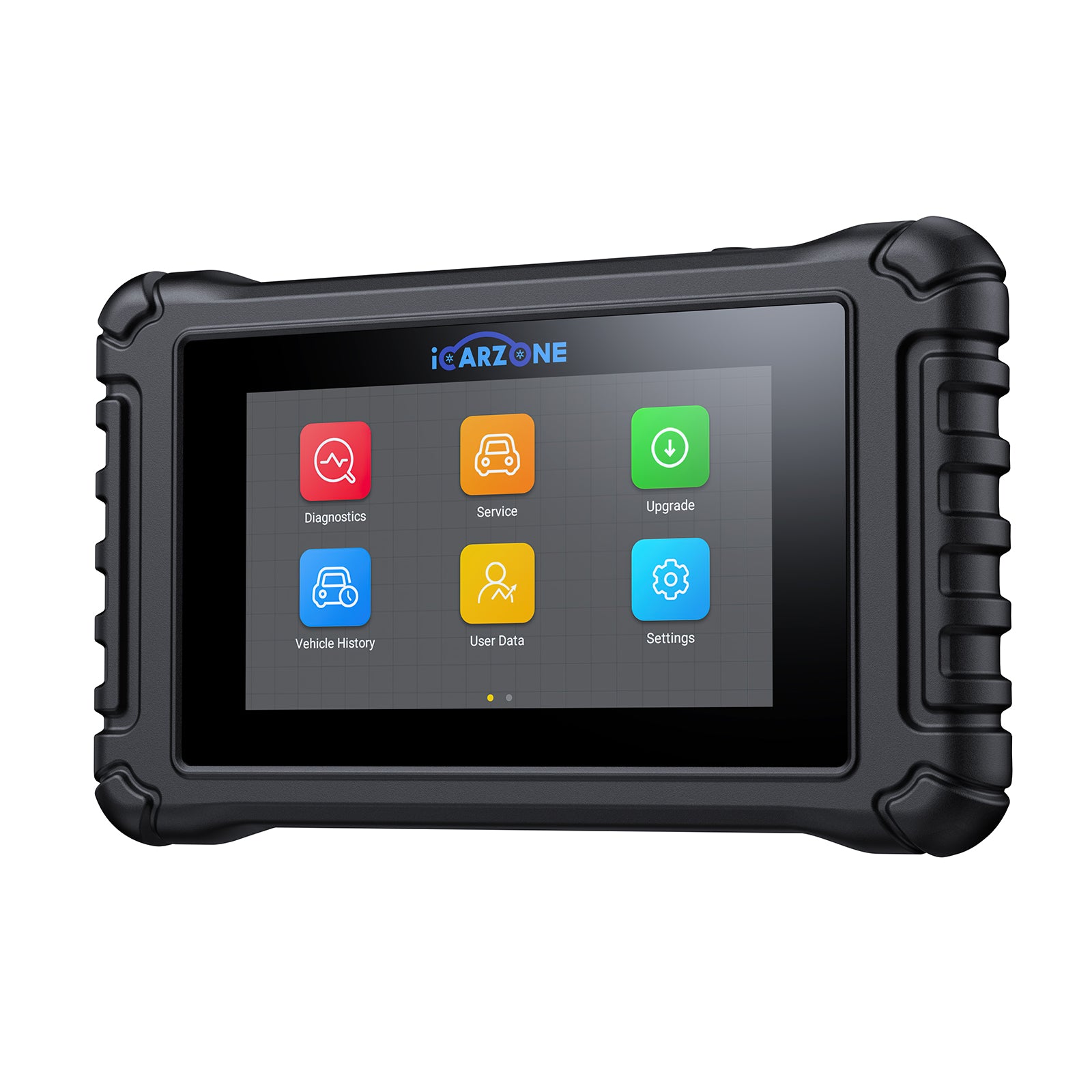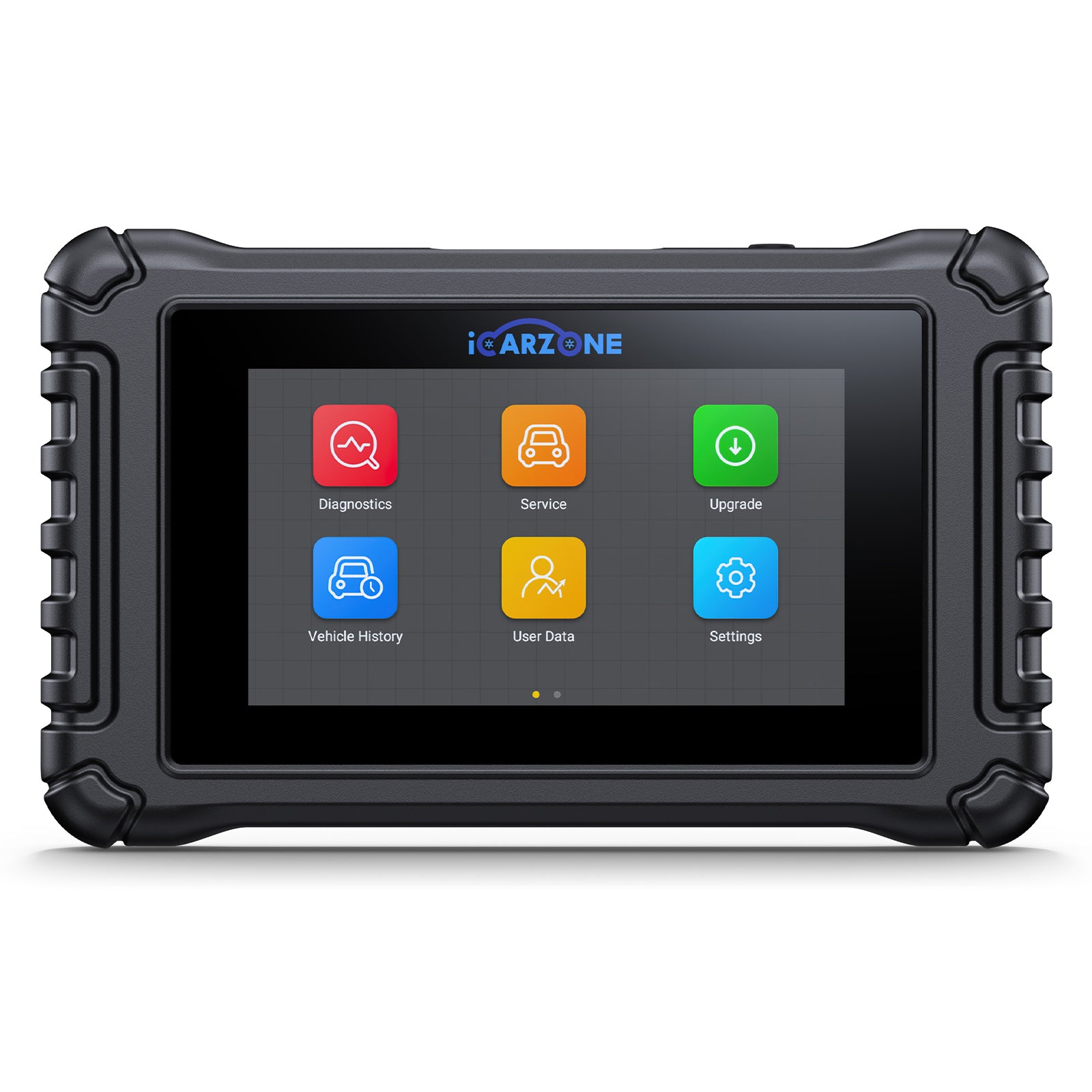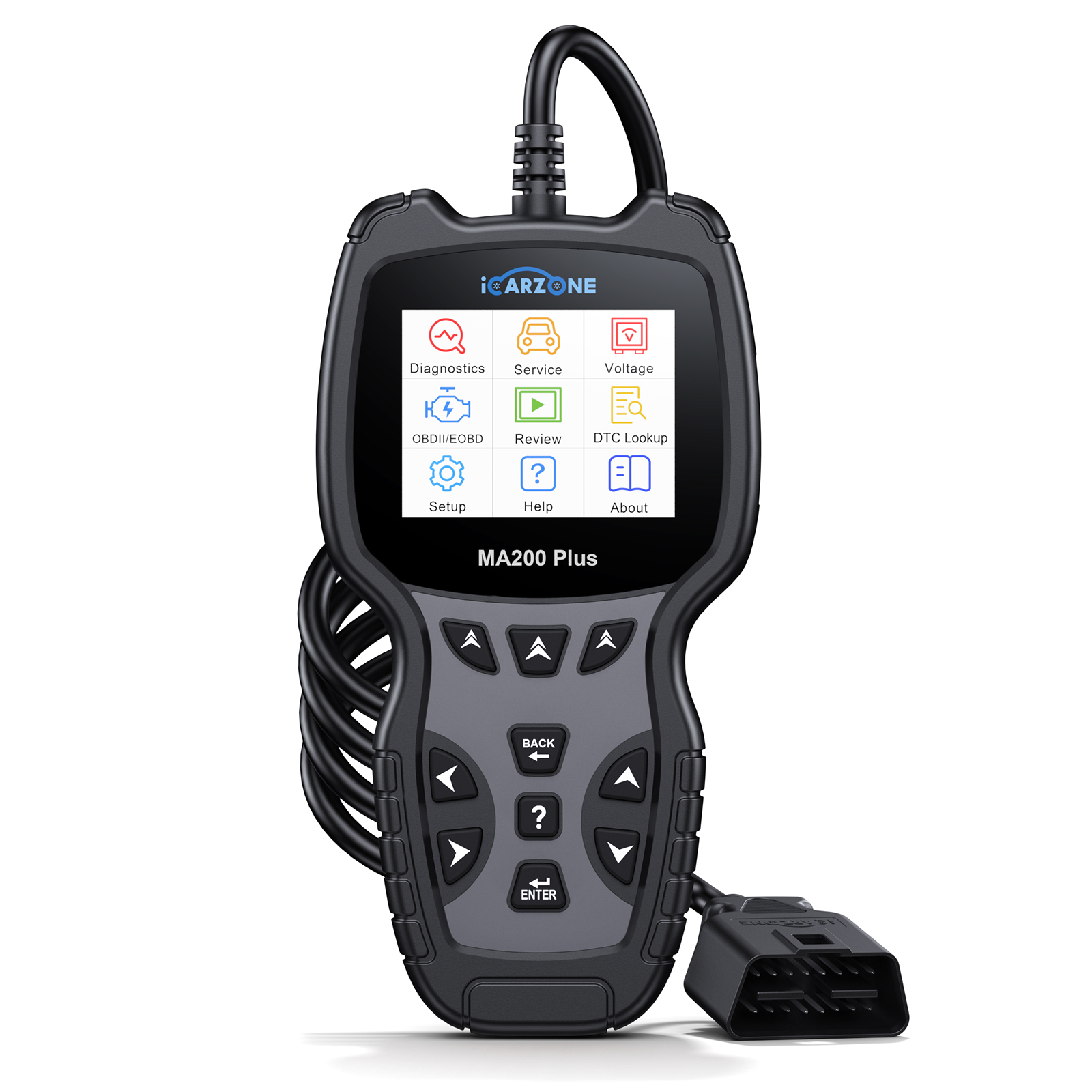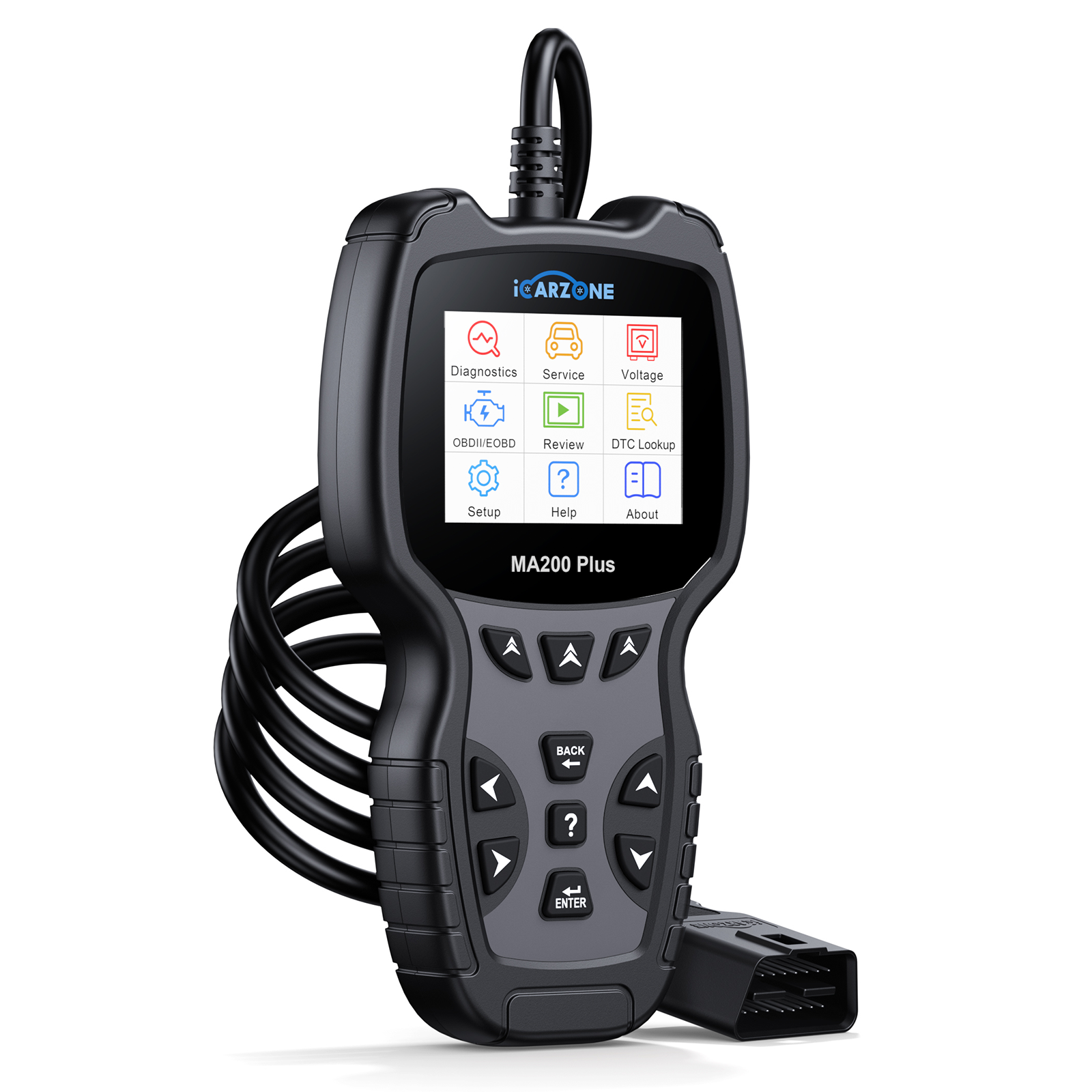DF015-0657: Electronic Valve Control Malfunction in BMW 3 Series | ICARZONE UR1000 FULL GUIDE 2025
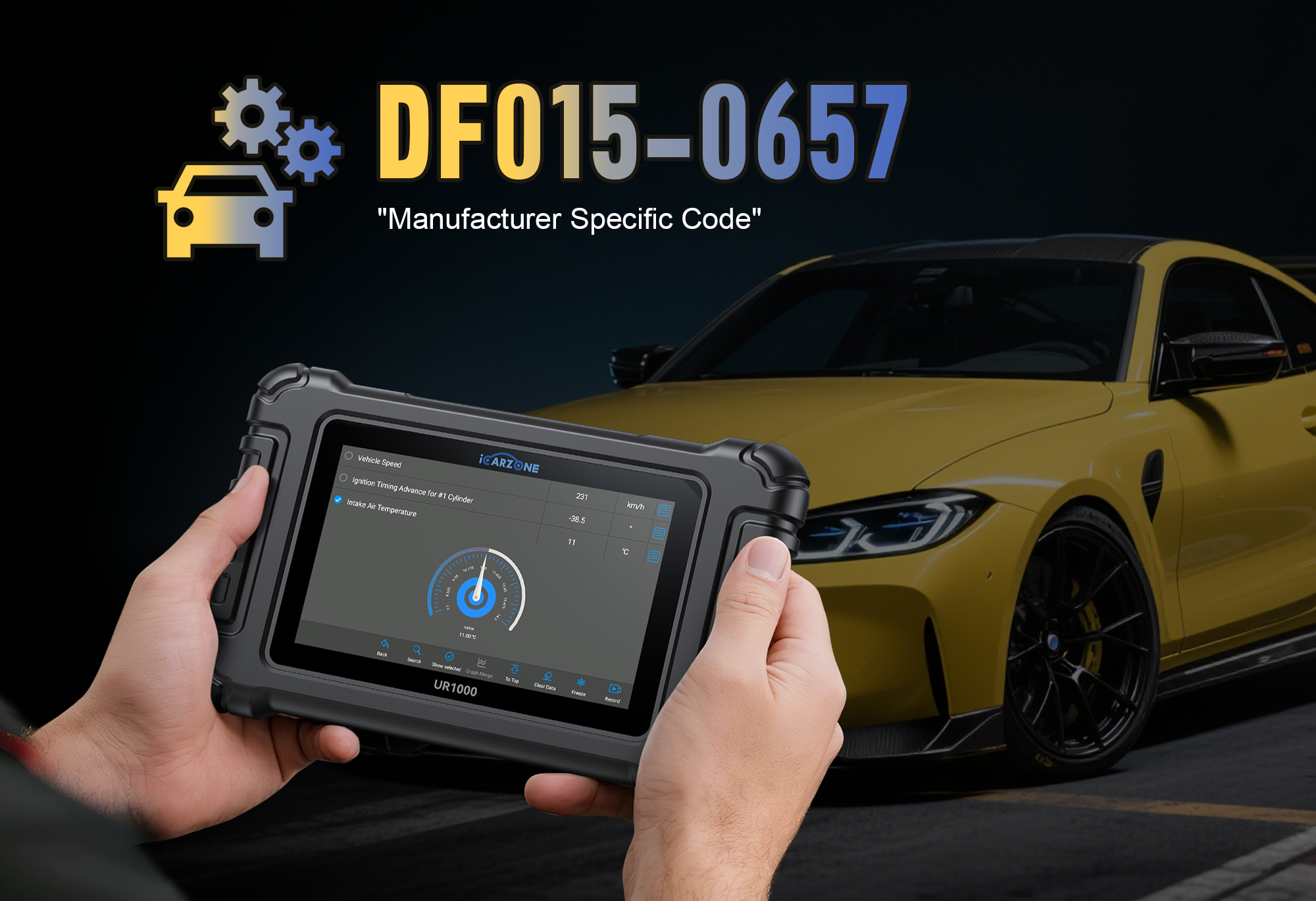
DF015-0657: Electronic Valve Control Malfunction in BMW 3 Series
Solve DF015-0657 in 2012-2020 BMW 320i, 328i, 330i (F30 chassis) with N20/N26 engines. Diagnose with ICARZONE UR1000 diagnostic tool.
Fix DF015-0657 with UR1000 Now1. What is DF015-0657 in BMW 3 Series?
DF015-0657 is a BMW-specific diagnostic trouble code indicating an Electronic Valve Control (EVC) System Malfunction in the variable valve timing mechanism. This code is most commonly associated with 2012-2020 BMW 3 Series (F30 chassis) models equipped with the N20 (2.0L turbocharged) and N26 (SULEV version) engines.
BMW's EVC system, also known as Valvetronic, uses an electric motor rather than traditional hydraulic mechanisms to adjust valve lift and timing—providing precise control over engine performance and efficiency. DF015-0657 specifically identifies issues with the position sensor signal within the EVC motor assembly, triggering when:
- The Engine Control Unit (ECU) detects implausible position data from the EVC sensor
- Communication between the EVC motor and ECU is interrupted
- Motor windings show abnormal resistance values outside BMW's specified range (4.5-5.5 ohms)
- Mechanical binding prevents proper valve lift adjustment

Why DF015-0657 Matters for BMW Owners
The N20/N26 engines in F30 3 Series models rely heavily on Valvetronic technology to deliver their signature balance of power and efficiency. Without proper EVC operation:
- Engine performance drops significantly—up to 40 horsepower loss in testing
- Fuel economy decreases by 3-5 MPG, especially in city driving
- Idle quality deteriorates with noticeable rough running
- Valvetronic motor overheating can occur, leading to complete system failure
- Extended operation may trigger limp mode, limiting speed to 40 mph
2. Common Causes in 2012-2020 BMW F30
DF015-0657 in the BMW 3 Series is strongly linked to Valvetronic system wear, oil contamination, and sensor issues—here are verified causes with real-world owner case studies:
- Valvetronic Motor Position Sensor Failure (2016 328i xDrive) — Example: A 2016 328i owner with 68,000 miles experienced intermittent DF015-0657. ICARZONE UR1000's EVC Sensor Test showed erratic position values. Disassembly revealed a worn sensor coil in the Valvetronic motor assembly. Replacing the motor with OEM part #11377644049 resolved the issue.
- Oil Contamination (2014 320i) — Example: A 2014 320i owner who used non-synthetic oil developed persistent DF015-0657. UR1000's Oil Quality Analysis detected excessive particulate matter. Oil analysis confirmed the oil didn't meet BMW LL-01 specifications, causing Valvetronic motor varnish buildup. An engine flush with Liqui Moly Oil System Cleaner followed by proper oil change resolved the code.
- Wiring Harness Damage (2017 330i) — Example: A 2017 330i owner developed DF015-0657 after body work. UR1000's Continuity Test identified a broken wire in the EVC motor harness. Inspection showed the harness was pinched during fender replacement. Repairing the wiring with BMW's harness repair kit (#61120007943) fixed the problem.
- ECU Software Glitch (2018 330i) — Example: A 2018 330i owner experienced DF015-0657 after a dealer software update. UR1000's BMW TSB Lookup identified Technical Service Bulletin 12-07-002, which addresses incorrect EVC calibration in 2017-2018 models. Downgrading to the previous ECU version via UR1000 eliminated the code.
- Mechanical Binding (2013 328i) — Example: A 2013 328i with 110,000 miles had persistent DF015-0657. UR1000's EVC Motor Load Test showed excessive current draw. Disassembly revealed carbon buildup on the Valvetronic eccentric shaft, causing binding. Cleaning the shaft and replacing the motor bearings resolved the issue.

3. Key Symptoms in BMW Models
DF015-0657 symptoms in the BMW 3 Series vary by engine condition but share core Valvetronic system issues—here's how they typically manifest:
Performance Symptoms
- Illuminated Check Engine Light (CEL) with DF015-0657 stored
- Reduced engine power and acceleration
- hesitation during low-speed acceleration
- Increased fuel consumption (3-5 MPG decrease)
- Engine may enter limp mode under heavy acceleration
Audible & Mechanical Symptoms
- Clicking or whirring noise from the top of the engine (Valvetronic motor area)
- Rough idle with noticeable vibrations
- Stalling when coming to a stop (severe cases)
- Valvetronic motor overheating (can be felt through the engine cover)
- Cold start issues with extended cranking
4. BMW Engines/Trims Prone to DF015-0657
BMW service data and enthusiast forums highlight these configurations with highest DF015-0657 incidence, based on Valvetronic system design and usage patterns:
| Engine | Model Years | BMW Trims | % of DF015-0657 Cases | Primary Risk Factor |
|---|---|---|---|---|
| N20B20 (2.0L Turbo) | 2015–2018 | 328i, 328i xDrive | 43% | Valvetronic motor sensor design vulnerability (updated in 2019) |
| N20B20 (2.0L Turbo) | 2012–2014 | 328i, 328i xDrive | 27% | Eccentric shaft bearing wear in high-mileage examples |
| N26B20 (2.0L Turbo SULEV) | 2012–2018 | 328i (California emissions) | 15% | Increased motor load from emissions control systems |
| B46B20 (2.0L Turbo) | 2019–2020 | 330i, 330i xDrive | 10% | Early production software calibration issues |
| Other BMW Engines | 2012–2020 | Various models | 5% | Intermittent wiring harness issues |
Critical TSBs for BMW DF015-0657:
- BMW TSB 12-07-002 (2017–2018 328i/330i): ECU calibration update to resolve false DF015-0657 triggers.
- BMW TSB 11-03-015 (2012–2015 328i): Valvetronic motor replacement procedure with updated part #11377644049.
- BMW TSB 14-04-008 (2014–2016 328i xDrive): Wiring harness inspection and protection kit for cold climate models.
5. Diagnostic Steps for BMW with ICARZONE UR1000
Diagnosing DF015-0657 in BMW 3 Series requires Valvetronic system-specific testing—here's how to use ICARZONE UR1000 for BMW-specific accuracy:
| Step | Action with UR1000 | BMW-Specific Goal | Pass/Fail Criteria |
|---|---|---|---|
| 1 | Full System Scan > Select "BMW" > "3 Series (F30)" > "Engine Control Unit" | Confirm DF015-0657 and check for related codes (DF010-DF020 range) | Pass: Isolated DF015-0657 | Fail: Multiple Valvetronic codes (system-wide issue) |
| 2 | Live Data > "Valvetronic System" > Monitor motor position, current, and temperature | Verify position values (0-5V range) and motor current (<3A at idle) | Pass: Stable values within range | Fail: Erratic values or excessive current |
| 3 | Advanced Diagnostics > "Valvetronic Test" > Run motor function test |
|
Pass: Proper resistance + full range movement | Fail: Out-of-range resistance or binding |
| 4 | Component Test > "Sensor Test" > "Valvetronic Position Sensor" | Verify sensor output matches actual motor position during manual movement | Pass: Output correlates with position | Fail: No output or incorrect values |
| 5 | Service Functions > "BMW TSB Lookup" > Enter VIN | Check for applicable TSBs (12-07-002, 11-03-015, 14-04-008) | Pass: No TSB match | Fail: TSB applies (follow recommended fix) |
Case Example: A 2016 328i xDrive failed Step 3 (7.2 ohms resistance) and Step 2 (erratic position values). UR1000's Oil Analysis showed oil contamination. After replacing the Valvetronic motor (BMW #11377644049), performing an engine flush, and updating ECU software via UR1000, all tests passed. A 150-mile test drive confirmed no return of DF015-0657.
Diagnose DF015-0657 in BMW with UR1000
6. Fixes for BMW's DF015-0657
Resolving DF015-0657 in BMW 3 Series requires Valvetronic system-specific repairs—here's how to address each root cause with ICARZONE UR1000:
1. Replace Valvetronic Motor Assembly (Most Common Fix)
- Ensure engine is completely cool—allow at least 4 hours after operation.
- Disconnect the negative battery terminal to prevent electrical shorts.
- Remove engine cover (4 Torx T30 screws) to access the Valvetronic motor.
- Locate the motor on top of the cylinder head, near the front of the engine.
- Disconnect the electrical connector by pressing the tab and pulling straight back.
- Remove the three mounting bolts (10mm socket) securing the motor.
- Carefully extract the motor, taking note of the eccentric shaft position.
- Clean the mounting surface and inspect the eccentric shaft for wear or carbon buildup.
- Install new OEM Valvetronic motor:
- 2015-2018 328i: BMW #11377644049
- 2012-2014 328i: BMW #11377585429
- 2019-2020 330i: BMW #11378640767
- Torque mounting bolts to 8 Nm (6 ft-lbs) in a star pattern.
- Reconnect electrical connector and battery terminal.
- Use UR1000's Valvetronic Relearn Procedure to calibrate the new motor (20-minute process).
2. Address Oil Contamination Issues
- Perform complete oil change using BMW-approved oil only:
- BMW LL-01 approved synthetic oil (Castrol Edge Professional, Mobil 1 0W-40)
- Capacity: 5.2 quarts for N20/N26 engines
- Replace oil filter with OEM BMW filter (#11427644490) or Mann-filter equivalent.
- For moderate contamination, add Liqui Moly Oil System Cleaner to old oil, idle for 15 minutes, then drain.
- For severe contamination, perform professional engine flush service.
- After oil change, use UR1000's Valvetronic System Test to verify improved operation.
3. Repair Damaged Wiring Harness
- Disconnect battery negative terminal before beginning.
- Identify damaged section using UR1000's Continuity Test results.
- Remove engine cover and trace the Valvetronic motor harness from motor to ECU connector.
- Common damage points:
- Where harness contacts the cylinder head cover (abrasion risk)
- Near the firewall penetration (pinching risk)
- Connector pins (corrosion in high-humidity climates)
- For minor damage, repair with BMW harness repair kit (#61120007943).
- For extensive damage, replace with OEM harness:
- N20 engine: BMW #12517645765
- Secure repaired/replaced harness with new clips to prevent future abrasion.
- Verify repair with UR1000's Circuit Validation Test.
4. Update ECU Software (2017+ Models)
- Connect UR1000 to BMW's OBD-II port (under dashboard, driver's side).
- Select "Service Functions" > "ECU Update" > "Check for BMW Updates".
- If TSB 12-07-002 update is available, select "Install Update".
- Ensure battery voltage remains above 13V during update (use battery tender if needed).
- Do not disconnect UR1000 or turn off ignition during the 30-minute update process.
- After completion, run UR1000's Valvetronic System Validation to confirm proper operation.
7. Repair Costs & Maintenance Tips
Maintenance Tips for BMW Owners
- Use only BMW LL-01 approved synthetic oil—non-approved oils cause Valvetronic motor varnish buildup that triggers DF015-0657.
- Shorten oil change intervals to 7,500 miles (instead of BMW's recommended 10,000 miles) if you:
- Drive in stop-and-go traffic regularly
- Live in hot climates (above 90°F regularly)
- Use your BMW for frequent short trips (under 10 minutes)
- Inspect the Valvetronic motor connector annually for corrosion—especially in coastal or high-humidity areas.
- Check for BMW TSB updates quarterly using UR1000—software fixes often resolve DF015-0657 without parts replacement.
- Allow the engine to reach operating temperature before demanding full power—cold oil doesn't properly lubricate the Valvetronic system.
- Consider a valve cleaning service at 60,000 miles to remove carbon buildup that can cause Valvetronic binding.
8. Preventive Maintenance for BMW
Avoid DF015-0657 in your BMW 3 Series with these proactive maintenance steps, recommended by BMW master technicians:
-
Oil Maintenance Schedule:
- Normal service: Oil change every 7,500 miles with BMW LL-01 0W-40
- Severe service: Oil change every 5,000 miles
- Use oil analysis at 60,000+ miles to check for contamination
-
Regular Valvetronic Inspections:
- Every 30,000 miles: Use UR1000's Valvetronic Health Check
- Visually inspect motor connector during each oil change
- Listen for abnormal noises from the motor area during cold starts
-
Software Updates:
- Check for ECU updates using UR1000 every 6 months
- Immediately install updates related to Valvetronic system (TSB 12-07-002 etc.)
-
Driving Habits:
- Allow engine to warm up for 30-60 seconds before driving
- Avoid high RPM operation until engine reaches operating temperature
- Take occasional highway drives (20+ minutes) to burn off carbon deposits
-
Storage Preparation:
- Change oil before storing for 30+ days
- Start and let idle until operating temperature monthly during storage
- Use a battery tender to maintain proper voltage (prevents ECU memory loss)
9. BMW-Specific FAQs
Short distances (under 30 miles) are possible, but performance will be significantly reduced. Extended driving may trigger limp mode and could cause Valvetronic motor overheating in N20 engines.
Not recommended. Aftermarket motors rarely match BMW's precise tolerances for the N20 engine's Valvetronic system, often leading to premature failure or incorrect valve timing.
Yes—UR1000 fully supports 2020 BMW 330i models with B46 engines, including the latest Valvetronic test procedures and BMW TSBs for DF015-0657.
Most commonly due to incomplete calibration or underlying oil issues. Always perform the Valvetronic relearn with UR1000 and change oil when replacing the motor.
Cold weather thickens oil, increasing Valvetronic motor load. This often makes DF015-0657 symptoms more pronounced in winter months until the engine reaches operating temperature.
Possibly—if your BMW is under the 4-year/50,000-mile factory warranty. Extended warranties may cover it, but check your specific policy. TSB fixes are often covered beyond basic warranty.
10. Summary
DF015-0657 (Electronic Valve Control Malfunction) is a common issue in 2012-2020 BMW 3 Series (F30) models, particularly affecting those with N20/N26 engines. Caused by Valvetronic motor failure, oil contamination, or wiring issues, DF015-0657 leads to reduced performance, decreased fuel economy, and potential engine damage if ignored.
The ICARZONE UR1000 simplifies BMW-specific diagnosis with tools like Valvetronic motor testing, live data monitoring, and BMW TSB lookup. Most DF015-0657 cases are resolved with motor replacement and oil service—avoiding expensive dealer visits. By following preventive maintenance steps (e.g., strict oil specifications and regular Valvetronic checks), BMW owners can maintain optimal engine performance and prevent DF015-0657 issues.
Fix DF015-0657 in Your BMW 3 Series with ICARZONE UR1000
UR1000 includes BMW-specific Valvetronic tests, TSB updates, and motor relearn procedures—perfect for N20/N26 engines in 2012-2020 3 Series models. Diagnose and repair with professional-grade tools.

© 2025 iCarzone. All rights reserved.


